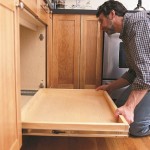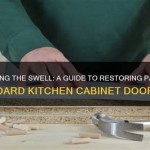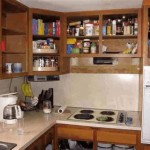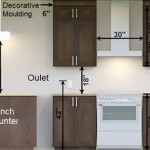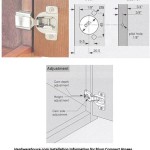High Kitchen Cabinets With Shelves: Maximizing Storage and Aesthetics
High kitchen cabinets with shelves represent a significant opportunity to optimize vertical space and enhance the overall functionality and aesthetic appeal of a kitchen. These cabinets, extending higher than standard wall cabinets, provide increased storage capacity, which is particularly beneficial in smaller or medium-sized kitchens where space is at a premium. Properly designed and installed high cabinets can transform a cluttered kitchen into an organized and visually appealing environment.
The decision to incorporate high kitchen cabinets with shelves involves careful consideration of several factors, including kitchen layout, ceiling height, desired style, and budget. Understanding the various types available, the benefits they offer, and the challenges they might present is crucial for making informed choices and achieving a successful kitchen renovation or upgrade.
Increased Storage Capacity
The primary advantage of high kitchen cabinets lies in their expanded storage capacity. Standard wall cabinets typically terminate several feet below the ceiling, leaving unused vertical space. High cabinets effectively utilize this area, providing significantly more shelving for storing infrequently used items such as holiday decorations, seasonal cookware, bulk food purchases, or excess kitchenware. This increased storage alleviates clutter from lower cabinets and countertops, resulting in a more organized and efficient workspace.
The additional height also allows for deeper shelves, accommodating larger items that might not fit comfortably in standard cabinets. This is particularly useful for storing oversized platters, large appliances like stand mixers, or collections of serving dishes. The ability to store these items out of sight contributes to a cleaner and more streamlined kitchen aesthetic.
The increased storage potential also translates to greater flexibility in organizing kitchen items. Categories of items can be grouped together more easily, and a more logical storage system can be implemented. For example, baking supplies can be stored on one set of shelves, while serving dishes can be stored on another. This organized approach simplifies meal preparation and cleanup, saving time and effort.
Enhancing Kitchen Aesthetics
Beyond their functional benefits, high kitchen cabinets contribute significantly to the overall aesthetic of the kitchen. They can create a sense of height and spaciousness, particularly in smaller kitchens. By drawing the eye upwards, they make the room feel larger and more airy.
The visual impact of high cabinets can be further enhanced through careful selection of door styles, finishes, and hardware. Pairing high cabinets with crown molding that extends to the ceiling creates a seamless, built-in look, adding a touch of elegance and sophistication to the kitchen. The integration of glass-front doors in some of the upper cabinets can also break up the visual monotony and showcase decorative items, further enhancing the aesthetic appeal.
The cohesive design created by continuous cabinetry from countertop to ceiling contributes to a more unified and polished look. It minimizes the visual clutter of exposed wall space and creates a sense of deliberate design. This is especially important in modern and contemporary kitchens, where clean lines and minimalist aesthetics are highly valued. The strategic placement of lighting, both inside and outside the cabinets, can further enhance the visual appeal and create a warm and inviting atmosphere.
However, it's important to consider the proportions of the kitchen when designing with high cabinets. In kitchens with very low ceilings, excessively tall cabinets can feel overwhelming and create a claustrophobic effect. Careful planning and consideration of the overall scale of the room are essential to achieving a balanced and harmonious design.
Accessibility Considerations and Design Elements
While high cabinets offer numerous benefits, accessibility is a crucial consideration. Items stored in the upper reaches of these cabinets may be difficult to reach without the aid of a step stool or ladder. Therefore, it's important to strategically place items based on their frequency of use. Less frequently used items should be stored on the higher shelves, while frequently used items should be kept in more accessible lower cabinets or drawers.
Several design elements can improve the accessibility of high cabinets. Pull-down shelving systems, for example, bring the contents of the upper shelves within easier reach. These systems can be particularly helpful for individuals with limited mobility or those who simply want to avoid the need for a step stool. Integrated lighting within the cabinets can also improve visibility and make it easier to locate items.
The type of shelves used within the high cabinets can also impact accessibility and functionality. Adjustable shelves provide flexibility in organizing items of different sizes, while pull-out shelves offer easier access to items stored at the back of the cabinet. Glass shelves can also enhance visibility and create a sense of openness.
The choice of door style is another important design consideration. Solid doors provide a clean and uniform look, while glass-front doors allow for displaying decorative items. Open shelving can also be incorporated into the design to create a more casual and accessible storage option. The combination of different door styles and shelving options can create a visually interesting and functionally versatile kitchen.
Materials, Construction, and Installation
The materials used in the construction of high kitchen cabinets should be durable and long-lasting. Common materials include solid wood, plywood, MDF (medium-density fiberboard), and particleboard. Solid wood is generally the most expensive option but offers superior strength and durability. Plywood is a good compromise between cost and quality, while MDF and particleboard are more affordable options but may be less resistant to moisture and damage.
The construction quality of the cabinets is also crucial. Look for cabinets with solid frames, strong joints, and smooth finishes. The hardware, such as hinges and drawer slides, should be of good quality to ensure smooth and reliable operation. The installation process is also critical for the long-term performance of the cabinets. It's important to hire a qualified installer who can properly align and secure the cabinets to the wall. Improper installation can lead to sagging, warping, and other problems.
Consider the finishing of the cabinets carefully. Paint is a versatile option that allows for a wide range of colors and styles. Stain highlights the natural grain of the wood and creates a warm and inviting look. Laminate and thermofoil finishes are durable and easy to clean, making them a good choice for busy kitchens. The choice of finish should complement the overall style of the kitchen and be resistant to moisture, scratches, and stains.
The planning phase is crucial before the actual purchase and installation. Consider the layout of the kitchen, the ceiling height, and the desired style. Measure the space carefully and create a detailed plan that includes the dimensions of the cabinets, the placement of appliances, and the location of electrical outlets and plumbing fixtures. Consulting with a kitchen designer can be helpful in creating a functional and aesthetically pleasing kitchen design.
Cost Considerations and Budgeting
The cost of high kitchen cabinets with shelves can vary significantly depending on several factors, including the materials used, the construction quality, the door style, and the installation costs. Solid wood cabinets are generally more expensive than those made from plywood or MDF. Custom cabinets are typically more expensive than stock cabinets.
When budgeting for high kitchen cabinets, it's important to factor in the cost of installation. Hiring a professional installer can add to the overall cost, but it ensures that the cabinets are properly installed and aligned. It's also important to consider the cost of any necessary modifications to the kitchen, such as moving electrical outlets or plumbing fixtures.
Several strategies can help to control costs. Consider using stock cabinets instead of custom cabinets. Choose less expensive materials, such as plywood or MDF. Do some of the work yourself, such as painting or staining the cabinets. Shop around for the best prices from different suppliers and installers. By carefully planning and budgeting, it's possible to achieve a stylish and functional kitchen with high cabinets without breaking the bank.
Ultimately, the decision to incorporate high kitchen cabinets with shelves is a personal one that should be based on individual needs and preferences. By carefully considering the various factors involved, including storage capacity, aesthetics, accessibility, materials, and cost, it's possible to create a kitchen that is both beautiful and functional.

What To In High Kitchen Cabinets Pretty Simple Mom

Tall Kitchen Pantry Cabinets Create A Full Wall Effect Sweeten

Tall Kitchen Cabinets Pictures Options Tips Ideas

Kitchen Tall Unit Design Cabinet Ideas By Livspace

How High Should You Hang Your Upper Kitchen Cabinets

Wall Cabinet Pull Down Shelving System Out Kitchen Storage Units Cabinets

Tall Ceiling Kitchen Cabinet Options Centsational Style

Tall Kitchen Cabinets How To Add Height The Honeycomb Home

Ceiling Height Cabinets

Cliqstudios Tall Kitchen Pantry Cabinet With Pull Out Shelves
Related Posts

